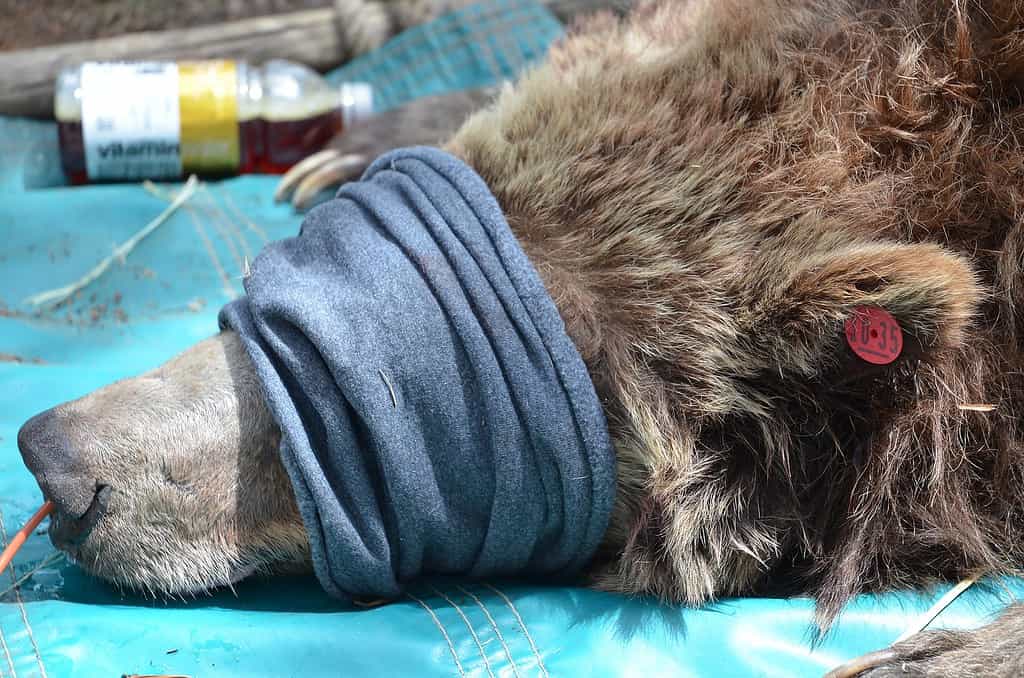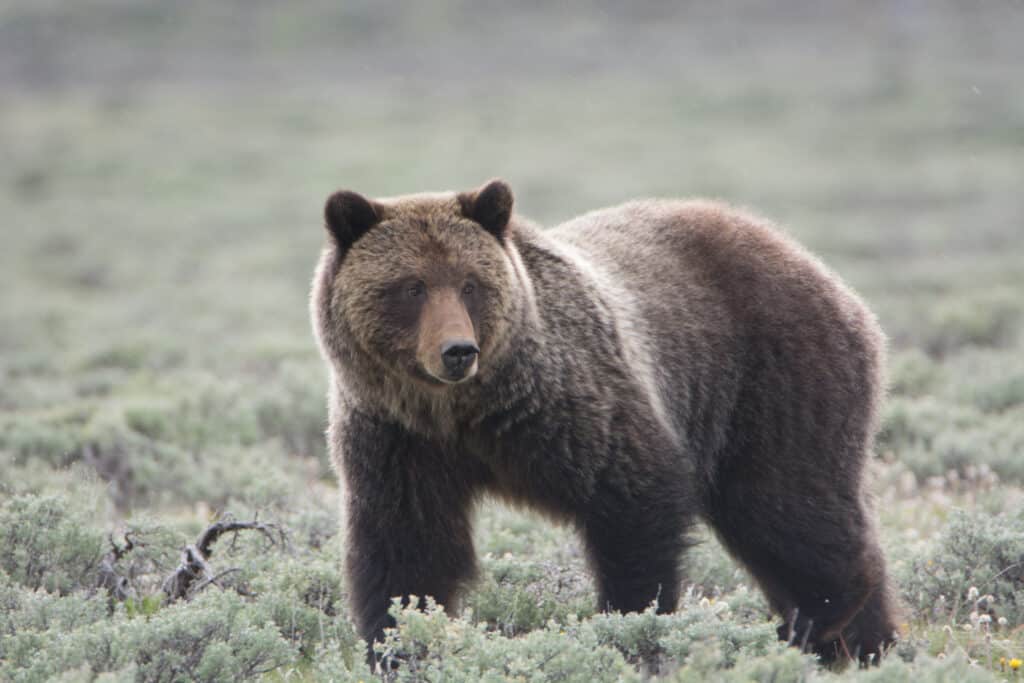Beginning August 28th, 2023, and continuing through the spookiest of days, October 31st, 2023, scientists with the Interagency Grizzly Bear Study Team (IGBST) will capture grizzly bears in the Yellowstone National Park. This capturing and monitoring operation, announced by the U.S. Geological Survey and the National Park Service, is part of a conservation effort required under the Endangered Species Act.
During this field operation, IGBST biologists will bait capture sites with grizzly bear food sources like deer and elk. There, they will set humane traps to capture, assess, and document the bears. Through this effort, scientists can assess the health and trends of Yellowstone’s grizzly bear population. They can also determine if interventions need to be made to protect the population. The bears will be handled by gold-standard safety and animal welfare protocols created by the IGBST.
Throughout Yellowstone, the National Park Service is placing bright warning signs around capture sites. These areas should be avoided by the public. This helps ensure the safety of park visitors and employees, the IGBST biologists, and the grizzly bears.
About the Interagency Grizzly Bear Study Team
Created in 1973 by the Department of the Interior, the IGBST are representatives from the U.S. Geological Survey, the National Park Service, the U.S. Fish and Wildlife Service, the U.S. Forest Service, the Eastern Shoshone and Northern Arapaho Tribal Fish and Game Department, and the States of Idaho, Wyoming, and Montana.
The research team aims to monitor the status and health of the grizzly bear population throughout the Greater Yellowstone Ecosystem. Their additional goal is to understand how the bears use their habitat and the relationship of land management projects to the overall health and welfare of the grizzly bear population.

When the researchers with the IGBST capture grizzly bears, they handle the sedated bears with strict, high standards of care.
What is the Current Population of Grizzly Bears in the Yellowstone National Park?
According to the National Park Service, as of 2021, there are an estimated 1,063 grizzly bears within the Greater Yellowstone Ecosystem. They estimate about 150-200 individuals have home ranges partially or entirely within the park. The current numbers represent intensive repopulation efforts. Their numbers rebounded from a dangerously low population of 136 individuals throughout the Greater Yellowstone Ecosystem in 1975.

Through conservation efforts and the resiliency of grizzly bears, their population is reaching a healthy size.
©Jilll Richardson/Shutterstock.com
Where Are the Best Places to See Grizzly Bears in Yellowstone?
The National Park Service advises the public to stay at least 300 feet away from the bears at all times. They also implore the public to never feed or encroach on their space. Feeding bears can be a death sentence for them as they can begin approaching people. As a result, the NPS often must euthanize them. In Yellowstone National Park, grizzle bears most commonly frequent areas such as Lamar Valley, Swan Lake Flats, Hayden Valley Gardiners Hole, from Fishing Bridge to the East Entrance, Dunraven Pass, Mammoth Hotsprings, and Tower-Roosevelt. The best times to see these amazing animals are at dawn and dusk.
The photo featured at the top of this post is © Scott E Read/Shutterstock.com
Thank you for reading! Have some feedback for us? Contact the AZ Animals editorial team.







